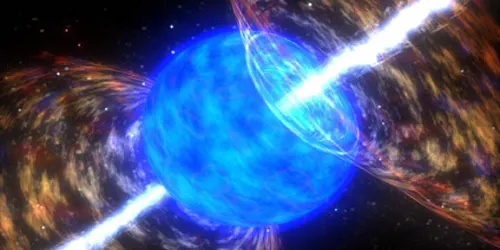
Surprising Discovery: Heavy Element Formation Limited in Failed Supernovae!
2024-10-09
Author: Ming
Introduction
In a groundbreaking revelation that could reshape our understanding of cosmic events, researchers have found that the gravitational collapse of certain massive stars, surprisingly, does not lead to the creation of a rich bounty of heavy elements commonly thought to be formed in these cataclysmic incidents.
Traditional Understanding of Heavy Element Formation
Traditionally, it is understood that about half of the elements heavier than iron are synthesized through a process known as the r-process, or rapid neutron capture process. This unique phenomenon occurs when a nucleus captures neutrons at such a rapid pace that it stalls radioactive decay, ultimately allowing the neutron-rich nucleus to emit electrons and neutrinos and transition to a higher atomic number.
Questioning the Role of Collapsars
While supernovae and neutron-star mergers have been the usual suspects in this element formation, recent simulations conducted by astronomers Coleman Dean and Rodrigo Fernández from the University of Alberta in Canada have cast doubt on the theory that collapsars—rapidly rotating massive stars that collapse without generating a typical supernova after exhausting their fuel—can also produce heavy elements through the r-process.
The Collapse of a Collapsar
During the collapse of a collapsar, it is capable of forming a black hole and generates a thick, unstable accretion disk to manage its significant angular momentum. Traditionally, it was thought that the neutron emissions during this collapse could create an environment conducive to the formation of heavy elements, provided these neutron-rich materials could be expelled into space.
Findings from the Simulations
However, Dean and Fernández’s comprehensive simulations took into account various critical factors, including nuclear processes within the collapsar and the immense gravitational pull of the black hole. Alarmingly, their results indicated that only under extreme conditions—specifically, with very low viscosity in the accretion disk—could any noteworthy quantities of light r-process elements be produced. In most scenarios, the majority of the neutron-rich matter was drawn into the black hole, and any remnants of the stellar envelope were only expelled once the production of neutrinos and neutrons had ceased.
Implications of the Research
The outcomes of this study highlight significant gaps in the current understanding of collapsar dynamics and r-process nucleosynthesis. Researchers stress that advanced modeling techniques and further investigations are crucial, particularly when considering other potential factors like strong magnetic fields that could potentially ignite the r-process in these extraordinary cosmic settings.
Conclusion
As we delve deeper into the mysteries of the universe, this research opens new avenues to explore the origins of heavy elements and demonstrates the complexities underlying stellar evolution. Stay tuned for more updates as scientists continue to refine their models and challenge long-held assumptions in the quest for knowledge about cosmic events that shape our universe!


 Brasil (PT)
Brasil (PT)
 Canada (EN)
Canada (EN)
 Chile (ES)
Chile (ES)
 España (ES)
España (ES)
 France (FR)
France (FR)
 Hong Kong (EN)
Hong Kong (EN)
 Italia (IT)
Italia (IT)
 日本 (JA)
日本 (JA)
 Magyarország (HU)
Magyarország (HU)
 Norge (NO)
Norge (NO)
 Polska (PL)
Polska (PL)
 Schweiz (DE)
Schweiz (DE)
 Singapore (EN)
Singapore (EN)
 Sverige (SV)
Sverige (SV)
 Suomi (FI)
Suomi (FI)
 Türkiye (TR)
Türkiye (TR)